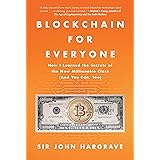Navigating the Bitcoin Cash Hard Fork: What Investors Need to Know About BCH’s Future
For those deeply immersed in the world of cryptocurrency, the landscape can often feel like a rapidly shifting terrain, filled with innovation, opportunity, and, at times, significant uncertainty. A prime example of this dynamic environment is the concept of a “hard fork,” a fundamental change to a blockchain’s protocol that can lead to two separate chains. In the accompanying video, industry veteran Roger Ver, Chairman of bitcoin.com and a prominent Bitcoin Cash (BCH) advocate, provides an invaluable perspective on the critical BCH hard fork scheduled for November 15th. This event, much like the broader decentralized finance (DeFi) movement, has left many investors and enthusiasts seeking clarity on its implications.
The discussion in the video offers a behind-the-scenes look at the technical and community-driven debates shaping Bitcoin Cash. Understanding such events is paramount for anyone holding or considering an investment in digital assets. It highlights the complexities of decentralized governance and the potential economic impacts on a cryptocurrency’s value and utility. This deep dive into the BCH hard fork, supported by insights from leading figures, aims to demystify the situation and provide a comprehensive overview for the crypto community.
Unpacking the November 15th Bitcoin Cash Hard Fork: BCHN vs. Bitcoin ABC
A hard fork represents a permanent divergence from a previous version of the blockchain, where older versions of the software are no longer compatible with the new. This essentially creates a new set of rules for the network, which all participants must adopt to continue interacting with the primary chain. The upcoming Bitcoin Cash (BCH) hard fork on November 15th, 2020, centered on a critical disagreement regarding the allocation of the block reward, has been a significant point of contention within the community.
At the heart of this dispute is a proposal from the Bitcoin ABC development team to divert 8% of the block reward directly to a wallet controlled by them, effectively creating a “developer tax.” This measure was intended to provide a stable funding mechanism for ongoing development. However, a substantial portion of the community, including Roger Ver, vehemently opposes this change, arguing that it deviates from Bitcoin’s original ethos where the entire block reward is allocated to miners as an incentive for securing the network. This opposition led to the formation of Bitcoin Cash Node (BCHN), an alternative full node implementation that maintains the traditional block reward structure, ensuring miners receive 100% of the newly minted BCH.
The Miner’s Choice: Signaling Support in a Decentralized Network
In a truly decentralized system like Bitcoin Cash, decisions are not made by a single authority but are instead determined by the collective consensus of its participants, particularly the mining pools that validate transactions and secure the network. Miners signal their support for a particular protocol version by incorporating specific data into the blocks they mine. This signaling provides a visible indication of which camp has the majority support, though as the video points out, even minority mining power can fork away.
During the period leading up to the fork, data suggested a clear preference among miners. Approximately 55% of the blocks being mined were actively signaling support for Bitcoin Cash Node (BCHN), demonstrating a strong community alignment with its principles. In stark contrast, Bitcoin ABC was registering 0% active signaling from miners. The remaining 45% of mining power was not signaling for either side, indicating a neutral or undecided stance at that time. A notable development, as mentioned in the video, indicated that another major mining pool was poised to begin signaling for BCHN, which was expected to push BCHN’s overall support to roughly 80%. This overwhelming show of support from the mining community for BCHN underscored the decentralized nature of consensus within the Bitcoin Cash ecosystem.
For existing BCH holders, the outcome of a hard fork can present both opportunities and challenges. Should a split occur with two viable chains, every BCH holder at the time of the fork would typically receive an equivalent amount of the new coin on the ABC chain. This phenomenon, often referred to as a “free airdrop,” can initially seem appealing. However, as noted by Roger Ver, these events often come with “a lot of free drama,” including market confusion, potential price volatility, and the need for exchanges and wallets to support the new chain. Such uncertainty can create significant headwinds for the cryptocurrency, impacting investor confidence and market stability.
Economic Implications and Investor Sentiment
The economic impact of a contentious hard fork is not merely theoretical; it can have tangible effects on investment strategies and market sentiment. Uncertainty inherently “spooks investors away,” as highlighted in the video, prompting a reevaluation of portfolio allocations. Roger Ver himself, a long-time advocate for Bitcoin Cash, revealed a personal shift in his investment strategy. He previously reinvested all interest earned from his other cryptocurrency holdings back into BCH or used it to sell BCH puts to acquire the asset at a lower price. However, upon observing the proposed 8% developer tax, he ceased this practice and redirected his income toward Ethereum, seeking a more stable investment platform.
This individual decision reflects a broader market desire for stability, a sentiment echoed by institutional players like MicroStrategy. The company’s CEO, Michael Saylor, has articulated a strong preference for “a stable platform that isn’t going to be changed” when making significant investments, such as their $400 million allocation into Bitcoin (BTC). While there may be debate over which specific platform truly offers the most stability, the core principle remains: investors, especially large-scale ones, prioritize predictability and resistance to sudden, fundamental protocol changes. For Bitcoin Cash, the hard fork introduced a period of instability that, by Roger’s own admission, hindered its appeal to those seeking a reliable foundation for long-term growth.
Bitcoin Cash: Utility Beyond the Fork with bitcoin.com Wallet
Despite the internal debates surrounding the hard fork, Bitcoin Cash continues to demonstrate significant utility, particularly through its associated infrastructure like the bitcoin.com wallet. This platform has made considerable strides in simplifying the user experience, making cryptocurrency transactions accessible to a broader audience. Its design philosophy centers on ease of use, aiming for an interface that “our mothers could understand,” a testament to its commitment to mass adoption.
A compelling statistic highlighted in the video is Roger Ver’s assertion that “more physical shops around the world accept Bitcoin Cash than any other cryptocurrency, including Bitcoin.” This remarkable claim, if accurate, underscores BCH’s real-world usability as a medium of exchange. The speed and affordability of BCH transactions contribute directly to this adoption, contrasting sharply with the often-high fees and slower confirmation times of other chains. A pivotal development enhancing BCH’s utility is the integration of Tether (USDT), the world’s leading stablecoin, onto the Bitcoin Cash blockchain. Performing a Tether transaction via a bitcoin.com wallet on BCH can cost as little as “a 20th of a penny,” a dramatic difference compared to the fluctuating costs of $5, $6, or even $10 for similar transactions on the Ethereum network. This cost efficiency for stablecoin transfers positions BCH as an attractive alternative for everyday transactions and remittances, further solidifying its role in the global financial landscape. The bitcoin.com exchange, as noted by Danish Chaudhry, also experiences strong interest, with many projects seeking BCH pairs to tap into its active audience.
Community Dynamics and Institutional Interest in Digital Assets
The cryptocurrency space is characterized not only by technological innovation but also by vibrant, albeit sometimes tumultuous, community dynamics. The incident involving a tweet from venture capitalist Tim Draper, which praised Roger Ver and BCH, inadvertently revealed the intense tribalism prevalent on platforms like Crypto Twitter. Despite accusations of hacking, the account was not compromised, and the subsequent deletion of the tweet reportedly illustrated the pressure exerted by the “toxic Bitcoin maximalist culture.” This behavior, as Ver points out, can be off-putting to newcomers and institutions alike, hindering the broader adoption of cryptocurrencies by presenting a hostile rather than welcoming image.
Decentralized systems, while offering unparalleled freedom from central control, inherently grapple with decision-making challenges. The absence of a single authority means that disagreements, even fundamental ones like the BCH hard fork, are resolved through open debate, signaling, and sometimes, a split into separate chains. This democratic yet often messy process is a core feature of decentralization, yet it can be perceived as chaotic by those accustomed to traditional corporate structures. Moreover, the increasing interest from institutional players, such as Kraken becoming a bank, signifies a growing maturity in the crypto market. The expansion of “on-ramps and off-ramps” that facilitate the exchange between traditional government-issued currencies and cryptocurrencies is vital for mass adoption. As more institutions like banks offer crypto services, the perceived barrier to entry for the average person diminishes, making it easier for individuals to transition into a more efficient, decentralized financial system where instant, low-cost transactions become the norm, a stark contrast to the often bureaucratic and slow processes of legacy banking.







